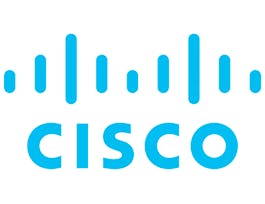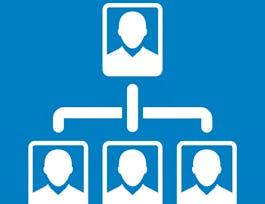In this course, we look at security and the Linux operating system. The course material is a good for anyone preparing for the Linux Foundation Certified IT Associate (LFCA) exam or just interested in learning more about Linux. This course is the third course in a series that aims to prepare you for working as an information technology professional. In this course, you will be introduced to ownership, authentication, and authorization. We will drill into creating security through backups and redundancy. We concluded by looking at how to secure the perimeter of our network and systems.



Securing Linux Systems
This course is part of Learning Linux for LFCA Certification Specialization

Instructor: Aspen Olmsted
Sponsored by IEM UEM Group
6,415 already enrolled
(102 reviews)
Skills you'll gain
Details to know

Add to your LinkedIn profile
20 assignments
See how employees at top companies are mastering in-demand skills

Build your subject-matter expertise
- Learn new concepts from industry experts
- Gain a foundational understanding of a subject or tool
- Develop job-relevant skills with hands-on projects
- Earn a shareable career certificate


Earn a career certificate
Add this credential to your LinkedIn profile, resume, or CV
Share it on social media and in your performance review

There are 4 modules in this course
In this module, we look at security and the Linux operating system. We will start by applying permissions to files and directories. We then look at Access Control Lists (ACL) and how they are applied in Linux. We will explore Context-Based security controls. Lastly, we will think about account types and privilege escalation.
What's included
5 videos4 readings5 assignments1 discussion prompt1 ungraded lab
In this module, we look at ways to increase our Linux Security. We start by looking at Linux Pluggable Authentication Modules (PAM). PAM is a suite of libraries that allows a Linux system administrator to configure methods to authenticate users. We then look at Public Key Infrastructure (PKI) and its use in Secure Shell (SSH). We conclude by utilizing open Virtual Private Networks (VPN).
What's included
4 videos4 readings5 assignments1 discussion prompt
In this module, we look at both local and remote system logging. We will also look at backup and compression of the files on the system to allow recovery in response to a system incident. We will conclude with a deep dive of the different tools available in Linux for archive and restore.
What's included
5 videos4 readings5 assignments1 discussion prompt1 ungraded lab
In this module, we look at the security at the boundaries of your network and your host Linux system. We look at different Linux Firewall technologies and the implementation of access control rules in the firewalls. We then think about forwarding packets when we want to allow traffic through the firewall to another host machine. We conclude by looking at intrusion detection systems in Linux.
What's included
4 videos4 readings5 assignments1 discussion prompt
Instructor

Offered by
Why people choose Coursera for their career




Learner reviews
102 reviews
- 5 stars
69.23%
- 4 stars
18.26%
- 3 stars
5.76%
- 2 stars
1.92%
- 1 star
4.80%
Showing 3 of 102
Reviewed on Jul 15, 2022
Teacher was very well spoken and easy to understand
Reviewed on Oct 21, 2023
learners with essential knowledge and practical skills to safeguard their systems effectively
Reviewed on Sep 16, 2023
The instructor was clear and the adding of the slides and extra access to materials were an absolute win for me.
Recommended if you're interested in Computer Science

Cisco Learning and Certifications

ISC2

Open new doors with Coursera Plus
Unlimited access to 10,000+ world-class courses, hands-on projects, and job-ready certificate programs - all included in your subscription
Advance your career with an online degree
Earn a degree from world-class universities - 100% online
Join over 3,400 global companies that choose Coursera for Business
Upskill your employees to excel in the digital economy




